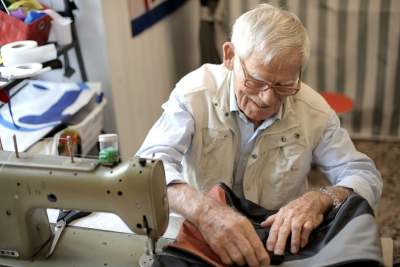The problem with throwing away clothing
An incredible 360,000 tonnes of clothes are thrown away in the UK every year. That’s equivalent to the weight of 90,000 elephants.
Clothes take an enormous amount of energy and resources to produce. Cotton uses large amounts of water, and polyester is made from fossil fuels. According to Oxfam, new clothes bought in the UK produce more carbon emissions per minute than driving a car around the world six times.
If we throw clothes away before it is really necessary, a lot of that energy and those resources go to waste.
The problems continue once our clothing enters landfill. The majority of clothes are made of plastic fabrics like polyester and acrylic. These fabrics break down into smaller and smaller plastic fibres, known as microfibres, which seep out into the environment. Microplastics are found all over the world, from the ocean floor to Arctic sea ice. They can be toxic to sea life, can damage fishes’ organs, and can harm their fertility.
If we wear each item of clothing for longer, we can reduce the amount we buy – meaning less emissions, resources and microfibres.









